David Stillwell
General Scales Unlock AI Evaluation with Explanatory and Predictive Power
Mar 09, 2025Abstract:Ensuring safe and effective use of AI requires understanding and anticipating its performance on novel tasks, from advanced scientific challenges to transformed workplace activities. So far, benchmarking has guided progress in AI, but it has offered limited explanatory and predictive power for general-purpose AI systems, given the low transferability across diverse tasks. In this paper, we introduce general scales for AI evaluation that can explain what common AI benchmarks really measure, extract ability profiles of AI systems, and predict their performance for new task instances, in- and out-of-distribution. Our fully-automated methodology builds on 18 newly-crafted rubrics that place instance demands on general scales that do not saturate. Illustrated for 15 large language models and 63 tasks, high explanatory power is unleashed from inspecting the demand and ability profiles, bringing insights on the sensitivity and specificity exhibited by different benchmarks, and how knowledge, metacognition and reasoning are affected by model size, chain-of-thought and distillation. Surprisingly, high predictive power at the instance level becomes possible using these demand levels, providing superior estimates over black-box baseline predictors based on embeddings or finetuning, especially in out-of-distribution settings (new tasks and new benchmarks). The scales, rubrics, battery, techniques and results presented here represent a major step for AI evaluation, underpinning the reliable deployment of AI in the years ahead.
Large Language Models show both individual and collective creativity comparable to humans
Dec 04, 2024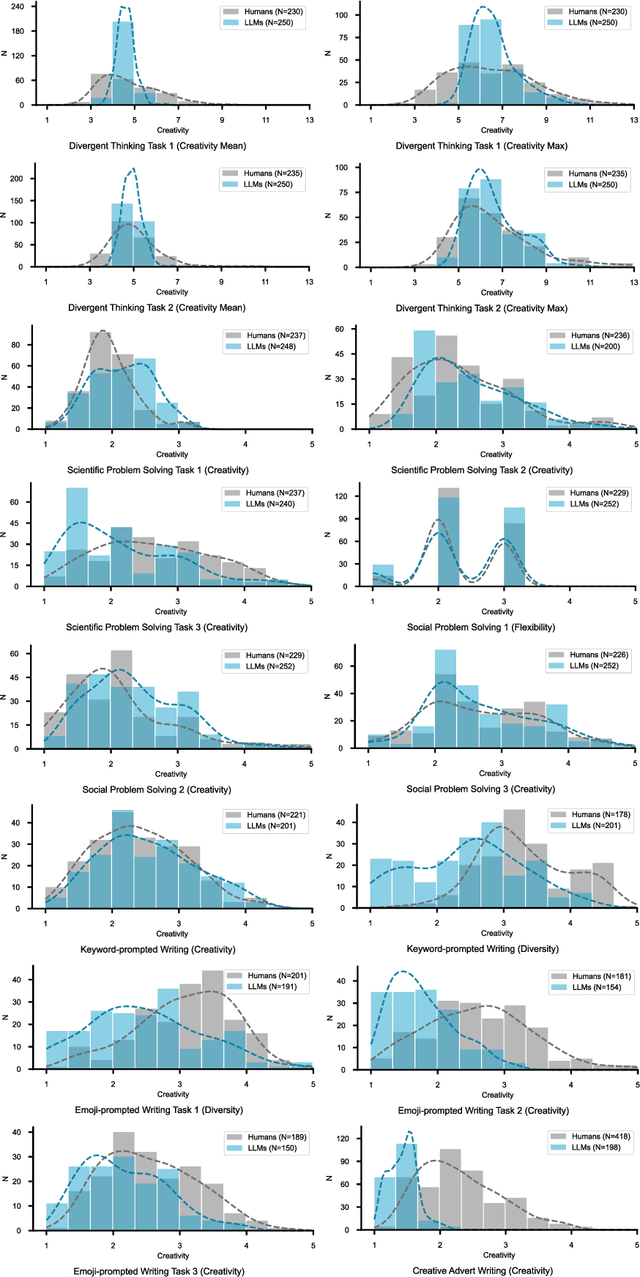
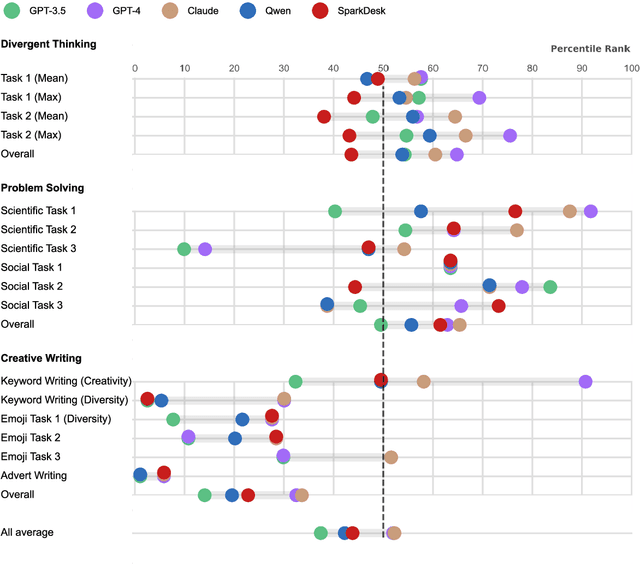
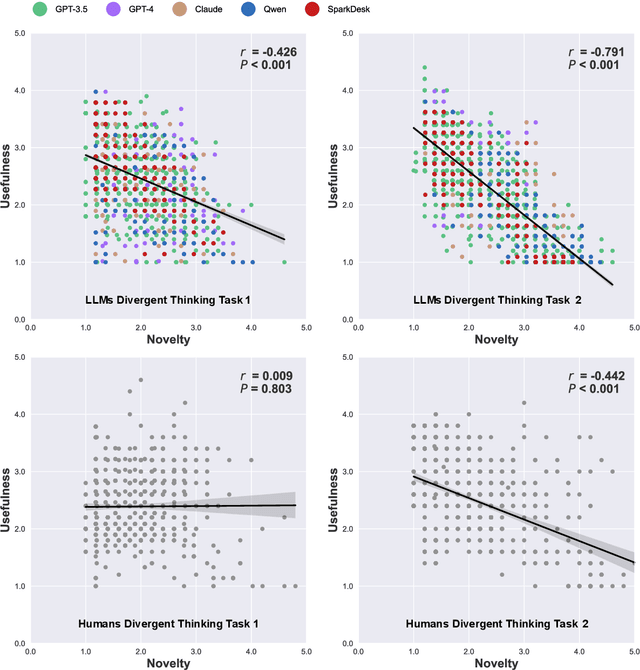
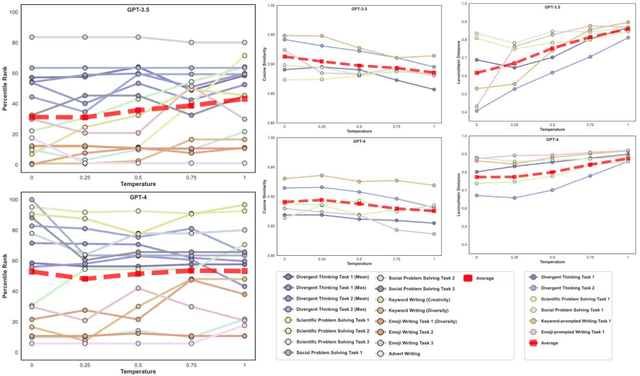
Abstract:Artificial intelligence has, so far, largely automated routine tasks, but what does it mean for the future of work if Large Language Models (LLMs) show creativity comparable to humans? To measure the creativity of LLMs holistically, the current study uses 13 creative tasks spanning three domains. We benchmark the LLMs against individual humans, and also take a novel approach by comparing them to the collective creativity of groups of humans. We find that the best LLMs (Claude and GPT-4) rank in the 52nd percentile against humans, and overall LLMs excel in divergent thinking and problem solving but lag in creative writing. When questioned 10 times, an LLM's collective creativity is equivalent to 8-10 humans. When more responses are requested, two additional responses of LLMs equal one extra human. Ultimately, LLMs, when optimally applied, may compete with a small group of humans in the future of work.
Evaluating General-Purpose AI with Psychometrics
Oct 25, 2023Abstract:Artificial intelligence (AI) has witnessed an evolution from task-specific to general-purpose systems that trend toward human versatility. As AI systems begin to play pivotal roles in society, it is important to ensure that they are adequately evaluated. Current AI benchmarks typically assess performance on collections of specific tasks. This has drawbacks when used for assessing general-purpose AI systems. First, it is difficult to predict whether AI systems could complete a new task it has never seen or that did not previously exist. Second, these benchmarks often focus on overall performance metrics, potentially overlooking the finer details crucial for making informed decisions. Lastly, there are growing concerns about the reliability of existing benchmarks and questions about what is being measured. To solve these challenges, this paper suggests that psychometrics, the science of psychological measurement, should be placed at the core of evaluating general-purpose AI. Psychometrics provides a rigorous methodology for identifying and measuring the latent constructs that underlie performance across multiple tasks. We discuss its merits, warn against potential pitfalls, and propose a framework for putting it into practice. Finally, we explore future opportunities to integrate psychometrics with AI.
What your Facebook Profile Picture Reveals about your Personality
Aug 13, 2017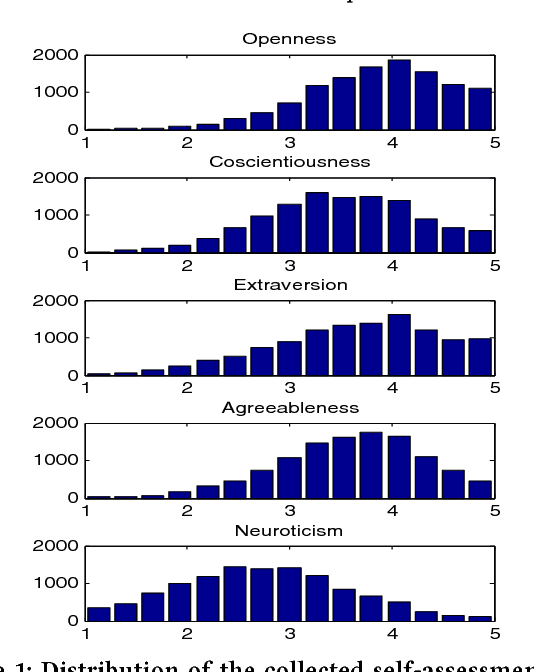
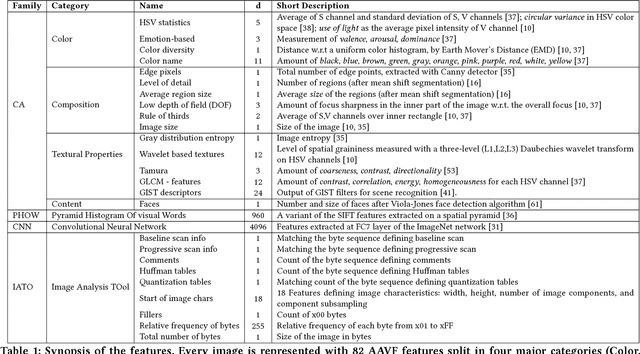

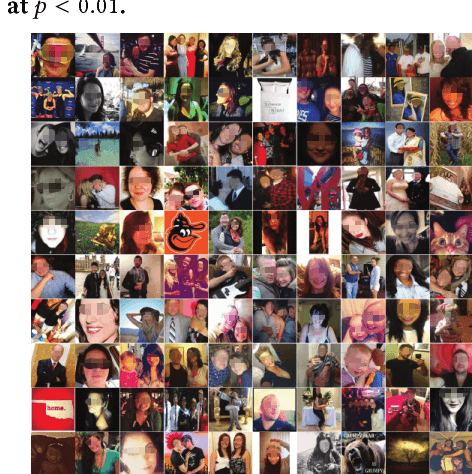
Abstract:People spend considerable effort managing the impressions they give others. Social psychologists have shown that people manage these impressions differently depending upon their personality. Facebook and other social media provide a new forum for this fundamental process; hence, understanding people's behaviour on social media could provide interesting insights on their personality. In this paper we investigate automatic personality recognition from Facebook profile pictures. We analyze the effectiveness of four families of visual features and we discuss some human interpretable patterns that explain the personality traits of the individuals. For example, extroverts and agreeable individuals tend to have warm colored pictures and to exhibit many faces in their portraits, mirroring their inclination to socialize; while neurotic ones have a prevalence of pictures of indoor places. Then, we propose a classification approach to automatically recognize personality traits from these visual features. Finally, we compare the performance of our classification approach to the one obtained by human raters and we show that computer-based classifications are significantly more accurate than averaged human-based classifications for Extraversion and Neuroticism.
Latent Human Traits in the Language of Social Media: An Open-Vocabulary Approach
May 22, 2017
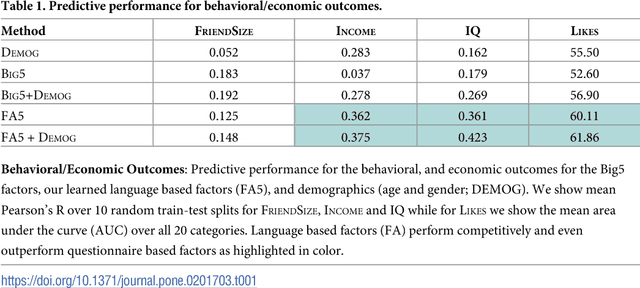
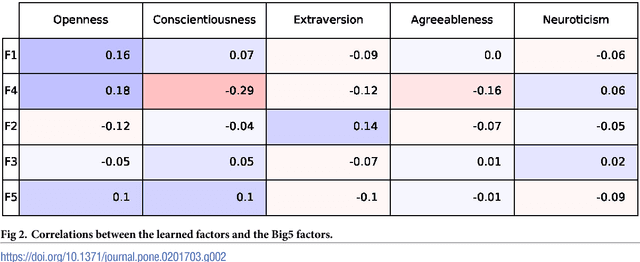

Abstract:Over the past century, personality theory and research has successfully identified core sets of characteristics that consistently describe and explain fundamental differences in the way people think, feel and behave. Such characteristics were derived through theory, dictionary analyses, and survey research using explicit self-reports. The availability of social media data spanning millions of users now makes it possible to automatically derive characteristics from language use -- at large scale. Taking advantage of linguistic information available through Facebook, we study the process of inferring a new set of potential human traits based on unprompted language use. We subject these new traits to a comprehensive set of evaluations and compare them with a popular five factor model of personality. We find that our language-based trait construct is often more generalizable in that it often predicts non-questionnaire-based outcomes better than questionnaire-based traits (e.g. entities someone likes, income and intelligence quotient), while the factors remain nearly as stable as traditional factors. Our approach suggests a value in new constructs of personality derived from everyday human language use.
How smart does your profile image look? Estimating intelligence from social network profile images
Dec 11, 2016
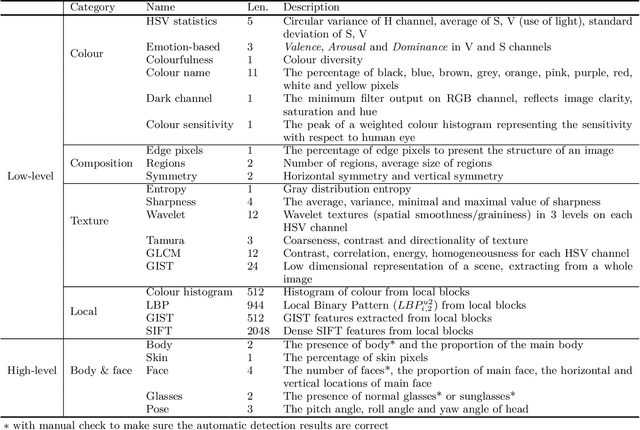


Abstract:Profile images on social networks are users' opportunity to present themselves and to affect how others judge them. We examine what Facebook images say about users' perceived and measured intelligence. 1,122 Facebook users completed a matrices intelligence test and shared their current Facebook profile image. Strangers also rated the images for perceived intelligence. We use automatically extracted image features to predict both measured and perceived intelligence. Intelligence estimation from images is a difficult task even for humans, but experimental results show that human accuracy can be equalled using computing methods. We report the image features that predict both measured and perceived intelligence, and highlight misleading features such as "smiling" and "wearing glasses" that are correlated with perceived but not measured intelligence. Our results give insights into inaccurate stereotyping from profile images and also have implications for privacy, especially since in most social networks profile images are public by default.
 Add to Chrome
Add to Chrome Add to Firefox
Add to Firefox Add to Edge
Add to Edge